Color Games in digital image editing can make images more vibrant and impressive. With Affinity Photo, this can be implemented remarkably easily by using overlays. These techniques help to change the overall mood of a photo, add desired effects, and significantly enhance the visual impact. Here you will learn how to maximize the color variety of your images using overlays and clever settings.
Key Insights
Overlays are great tools for enhancing existing images in terms of color and structure. You can easily merge various layers and refine the image effect using blending modes and filters. Working with masks or blending options allows for a creative control over the visibility of colors and light.
Step-by-Step Guide
Understanding the Basic Principle
First, we will focus on the principle behind using overlays. These are additional images that you can overlay on your main image to create specific color and light effects. They work by affecting the underlying layers and can be easily adjusted to achieve the desired visual effects.
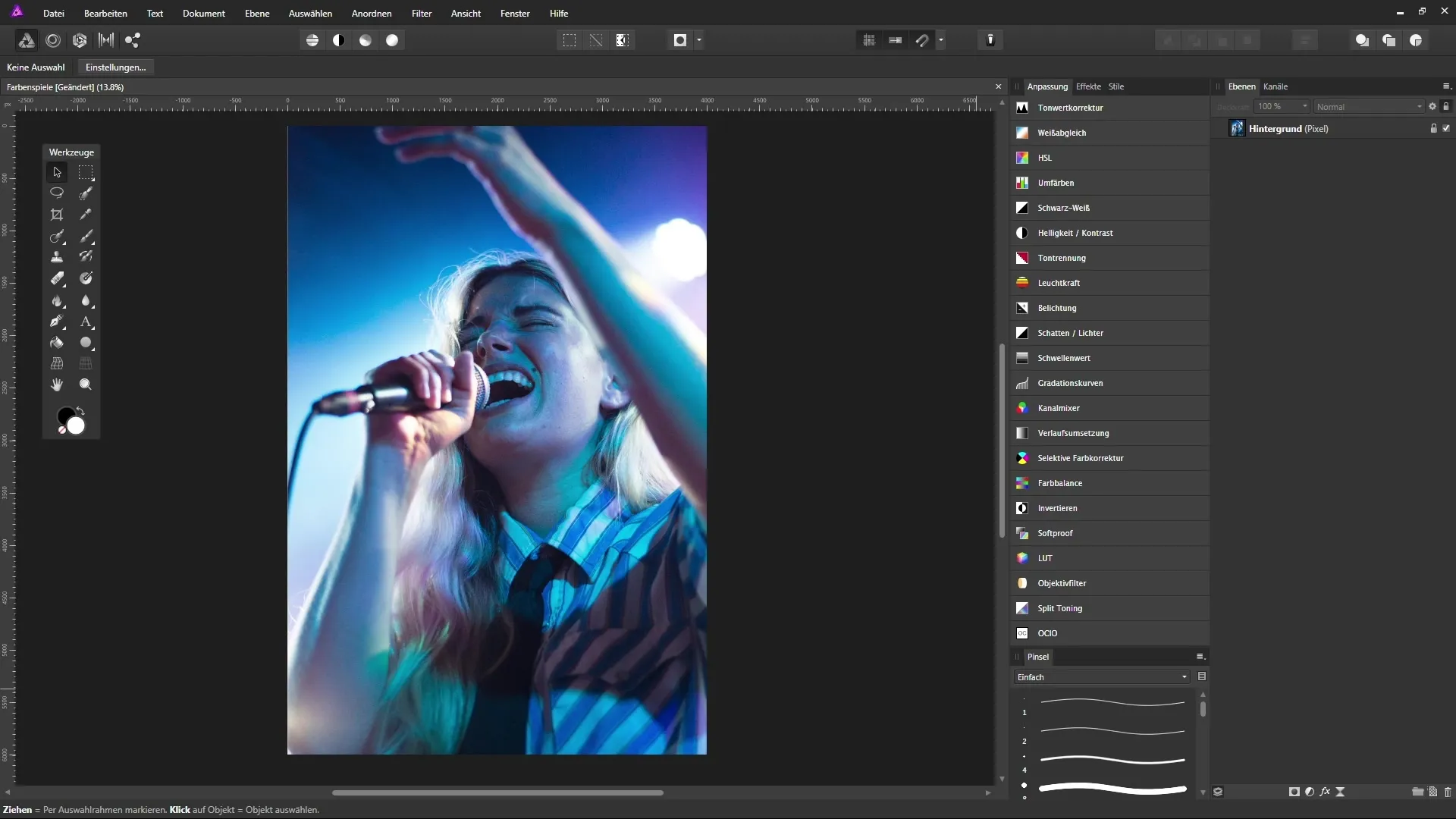
Adding an Image as an Overlay
Let's start with an example image that you want to edit. In this case, we will use the photo of a singer as the source image. To bring in more color, you first need a suitable overlay – another image with interesting color tones. To add the overlay, follow these steps:
- Click on "File" and select "Place".
- Locate the overlay on your computer and place it over the source image.
Alternatively, you can simply select the image in Windows Explorer, drag it into the Affinity Photo window, and drop it there.
Adjusting and Placing the Image
After placing the overlay, you will notice that it appears as a new layer in the layers palette. To position and adjust it correctly, do the following:
- Click on the overlay layer in the layers palette.
- Drag the corners of the transformation frame to resize and position the image in the desired area.
- Enable magnetic alignment to place the image precisely.
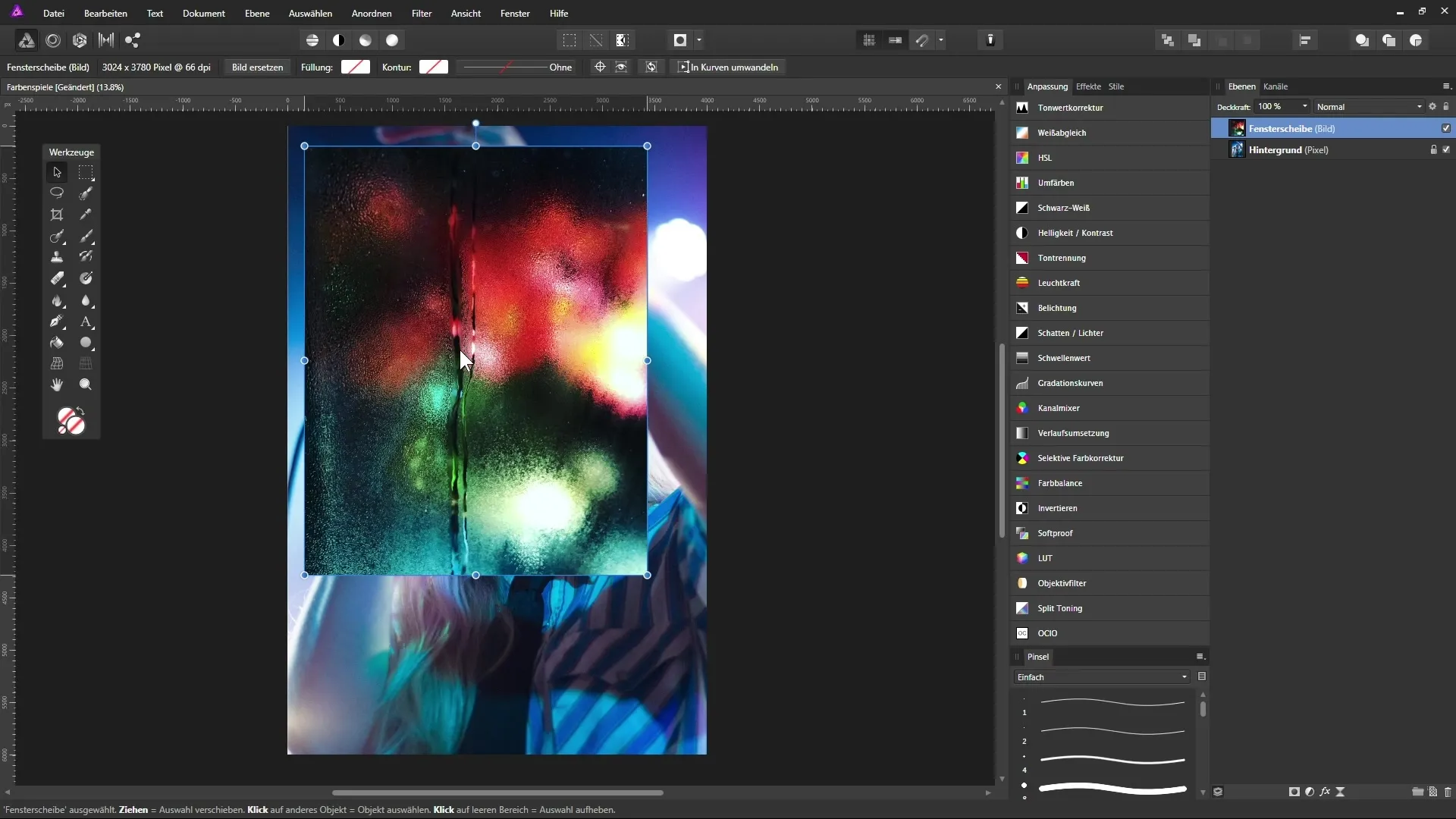
Applying Blending Modes
To best merge the overlay with the main image, the layer blending modes are crucial. Select the blending mode to determine how the colors of the overlay interact with the underlying layers:
- Click on the dropdown arrow above the layers palette, where the default blending mode "Normal" is displayed.
- Test various blending modes like "Multiply", "Negative Multiply", and "Soft Light" to see which effect you like best.
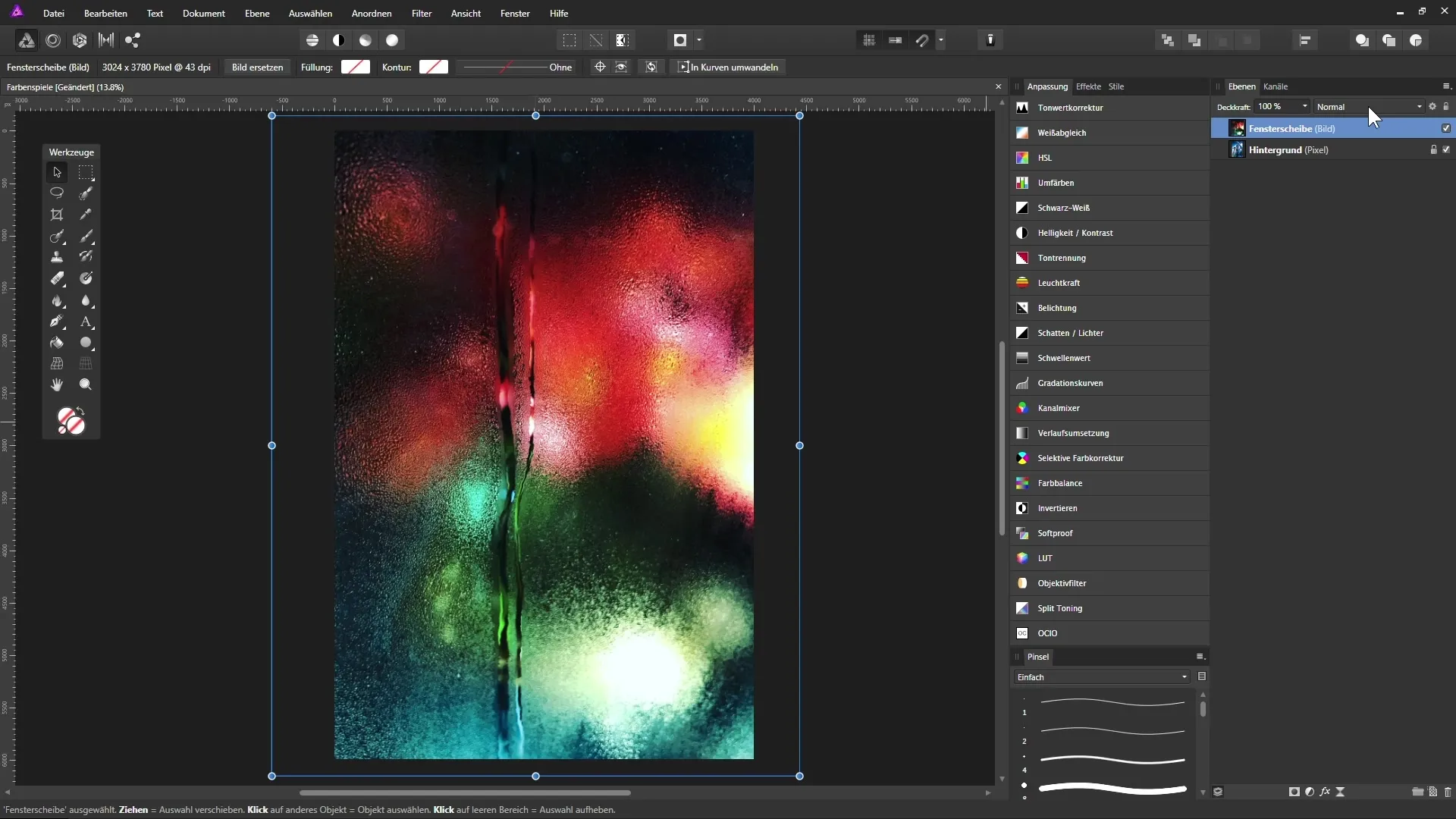
Adjusting Blur Filters
To soften the textures of the overlay and create a harmonious connection, you can use filters. In this case, the "Gaussian Blur" is suitable:
- Select the overlay layer and go to "Filter".
- Select "Live Filter" and then "Gaussian Blur".
- Adjust the radius slider to soften the image.
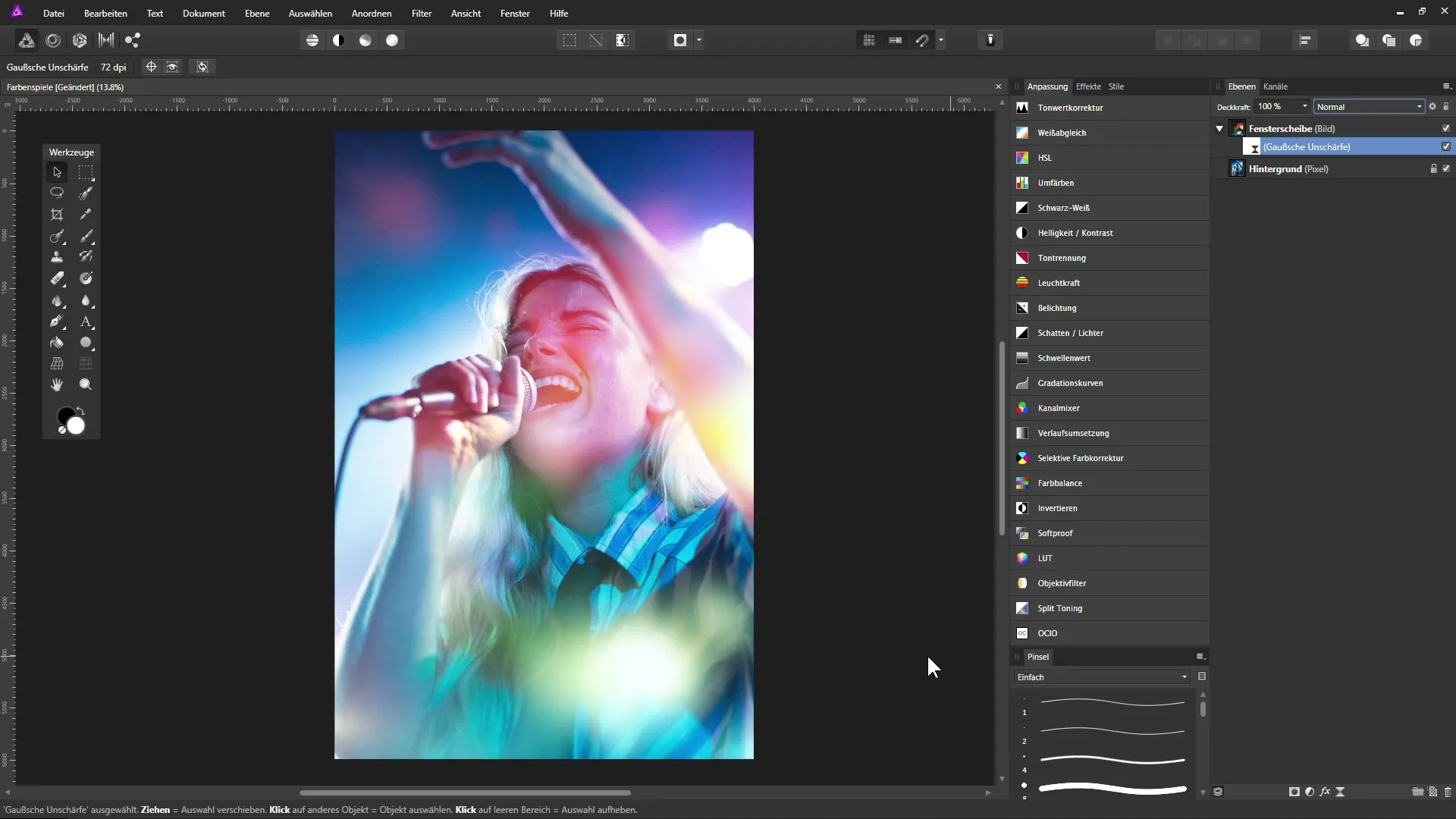
Fine-Tuning and Interactions with Opacity
Once the colors and options are applied, you should adjust the opacity to achieve the desired effect:
- Reduce the opacity of the overlay layer until the color addition meets your expectations.
- Do this using the slider in the layers palette.
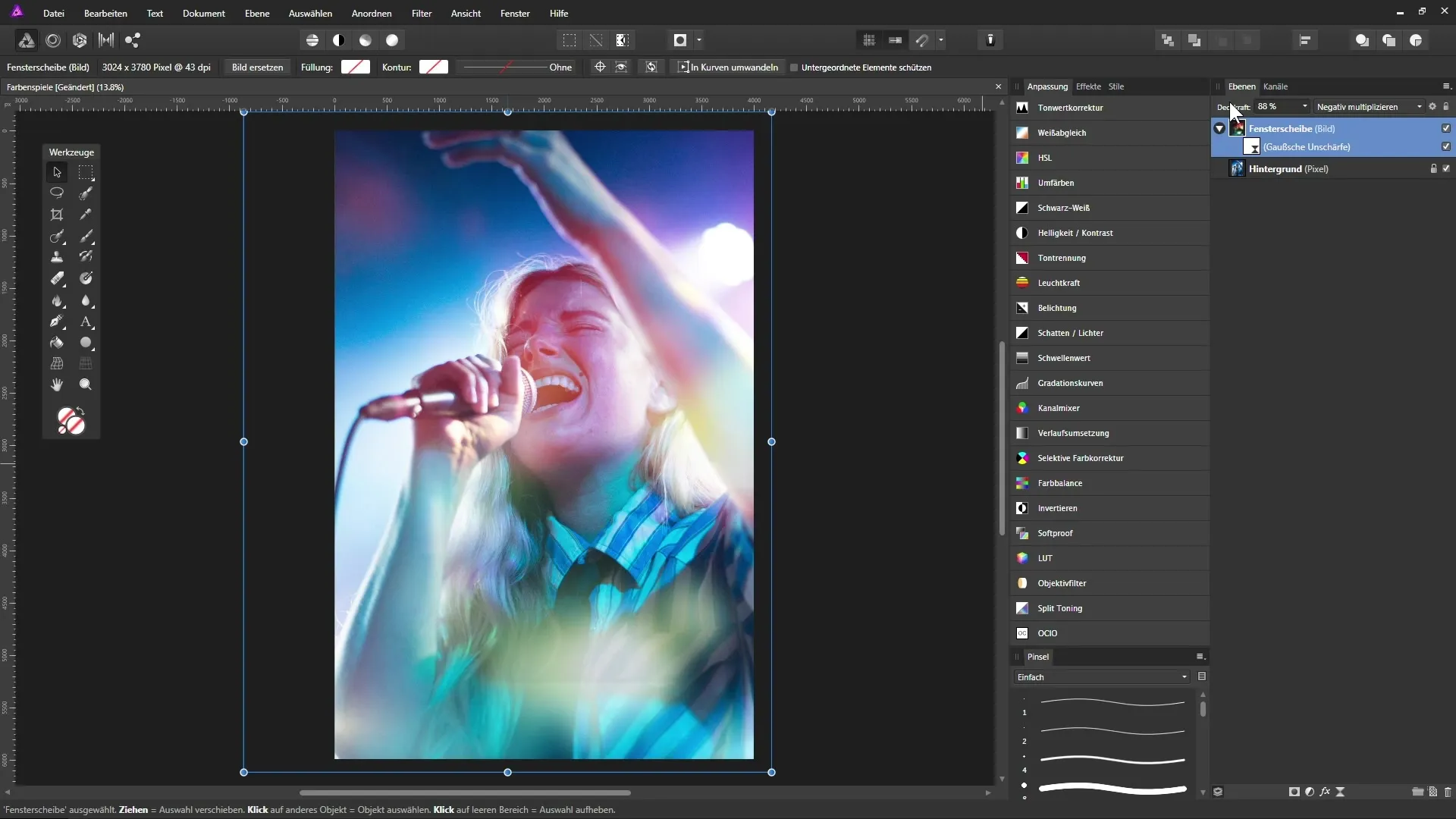
Refining Blending Options
With blending options, you can specifically adjust certain areas of the overlay layer. For example, you can make dark or light areas more transparent:
- Open the blending options via the gear icon while the overlay layer is active.
- Experiment with the anchor points to precisely adjust the visibility of different areas.
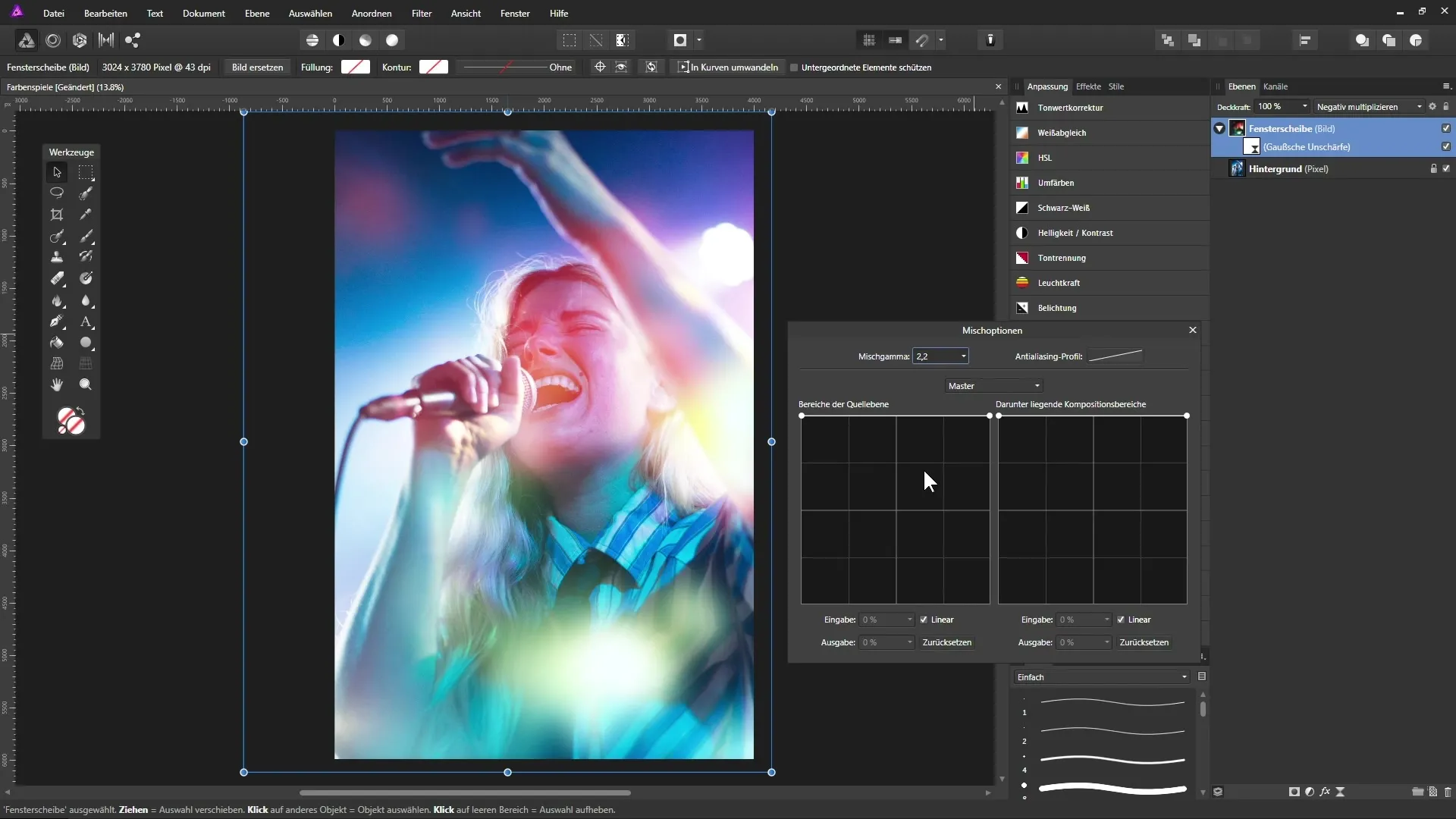
Further Adjustments and New Effects
After setting the transparency with blending options, you can add further effects. A black-and-white image often serves as a canvas to set additional color accents.
- Go to "File" again and select a suitable black-and-white image.
- Place it below the overlay and also use blending modes to create contrast.
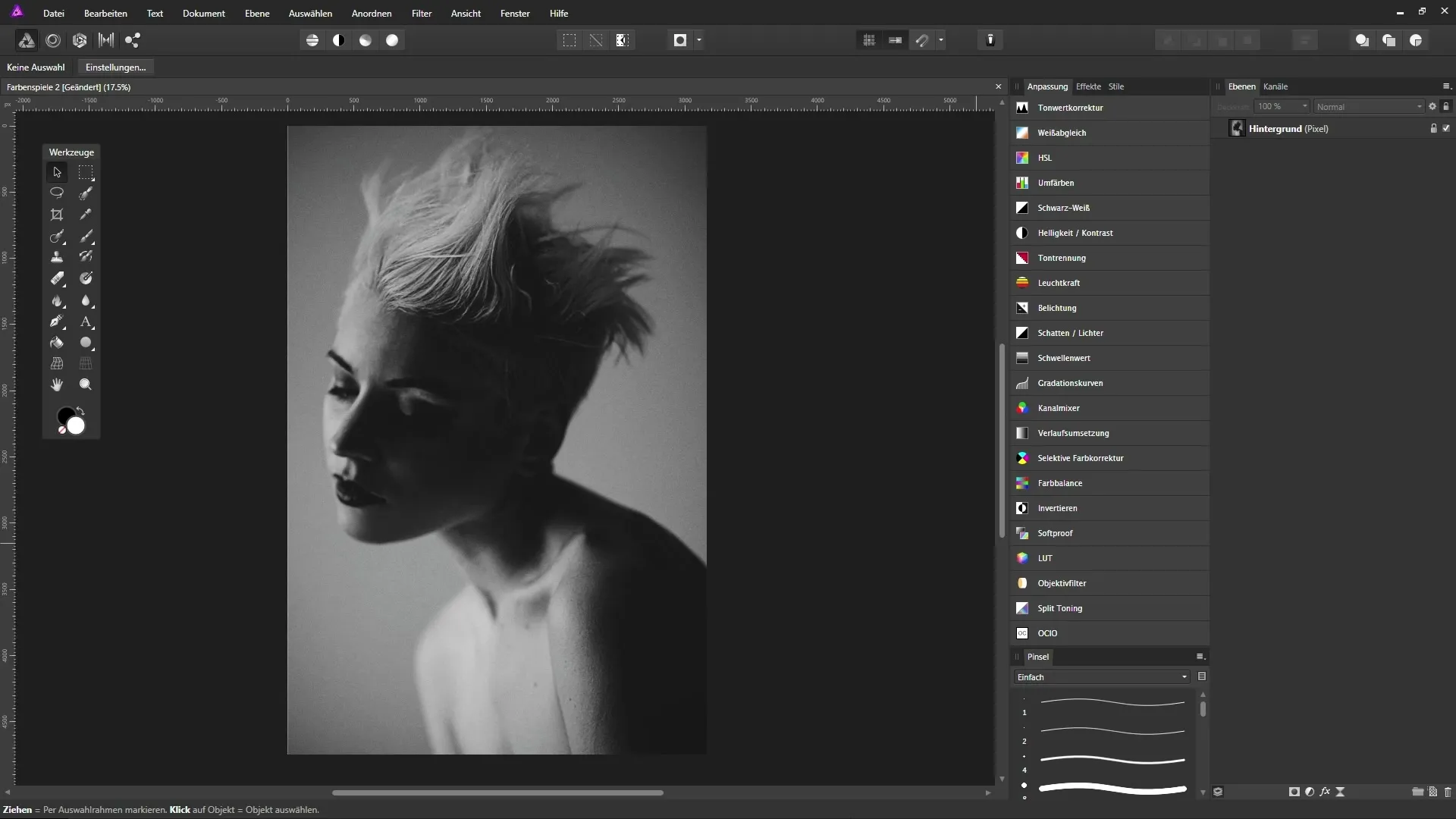
Final Touches
If you are satisfied with the changes made so far, you can further refine the image editing, for example, by adding noise or depth of field:
- Add a live filter for noise as the final touch.
- Adjust the intensity so that the image appears homogeneous.
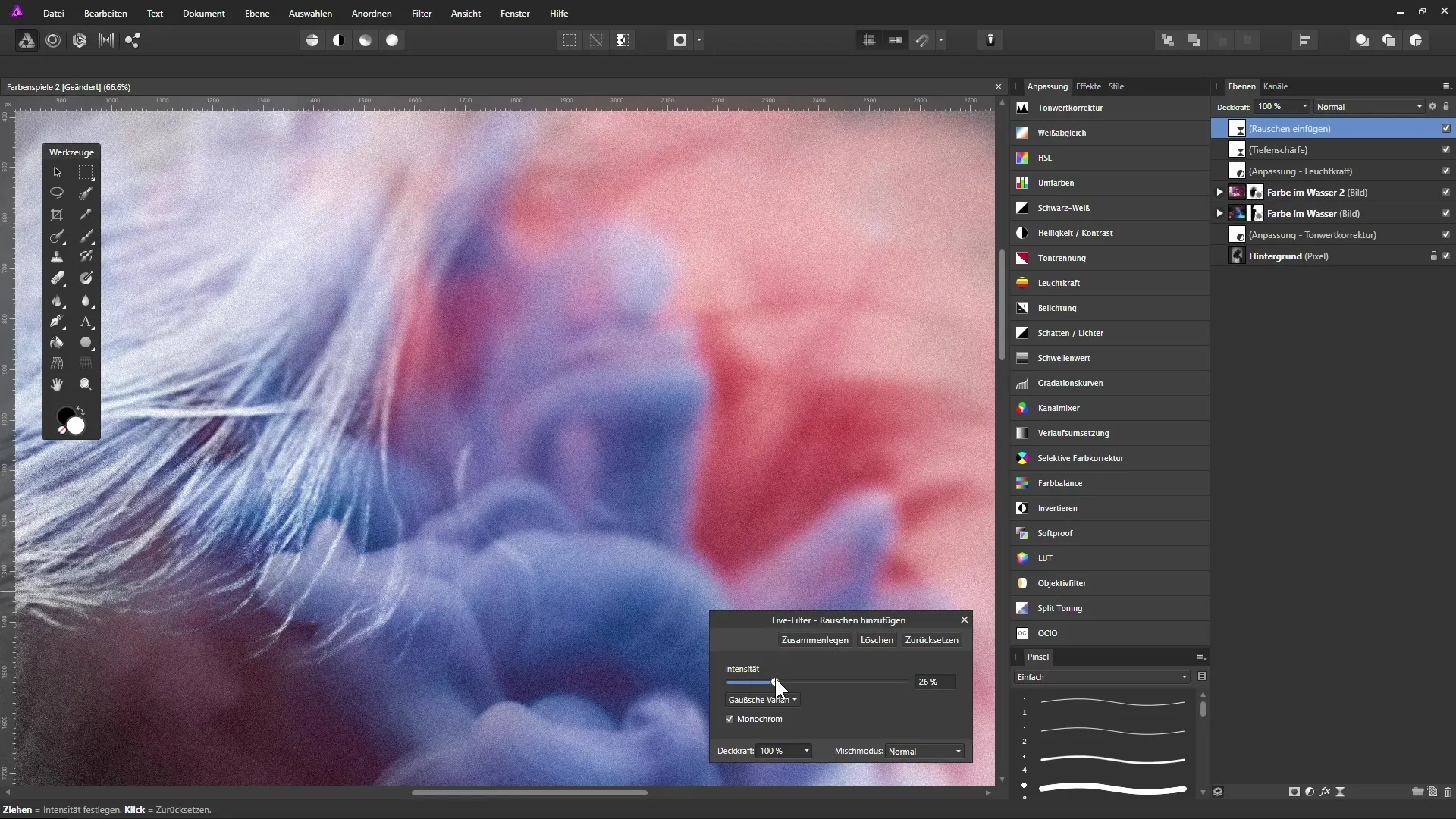
Summary – Creating Color Games in Affinity Photo
In this guide, you learned how to use overlays in Affinity Photo to create color games. The skillful combination of blending modes, adjustments, and masks allows you to create fascinating visual effects. Tailor your settings and experiment with various effects to find your unique style.
Frequently Asked Questions
How do I add an overlay in Affinity Photo?Click on "File", select "Place" or drag the image directly into the program.
What can I do if the colors look too intense?You can reduce the opacity of the overlay layer or adjust the colors with adjustment layers as well.
How can I try different blending modes?Click on the dropdown selection next to the blending mode in the layers area and choose different options.
What are blending options and how do I use them?Blending options allow you to adjust the visibility of certain areas in a layer to achieve harmonious gradients or more depth.
How do I use filters in Affinity Photo?Select the layer, go to "Filter", and choose the desired filter to apply additional effects.


